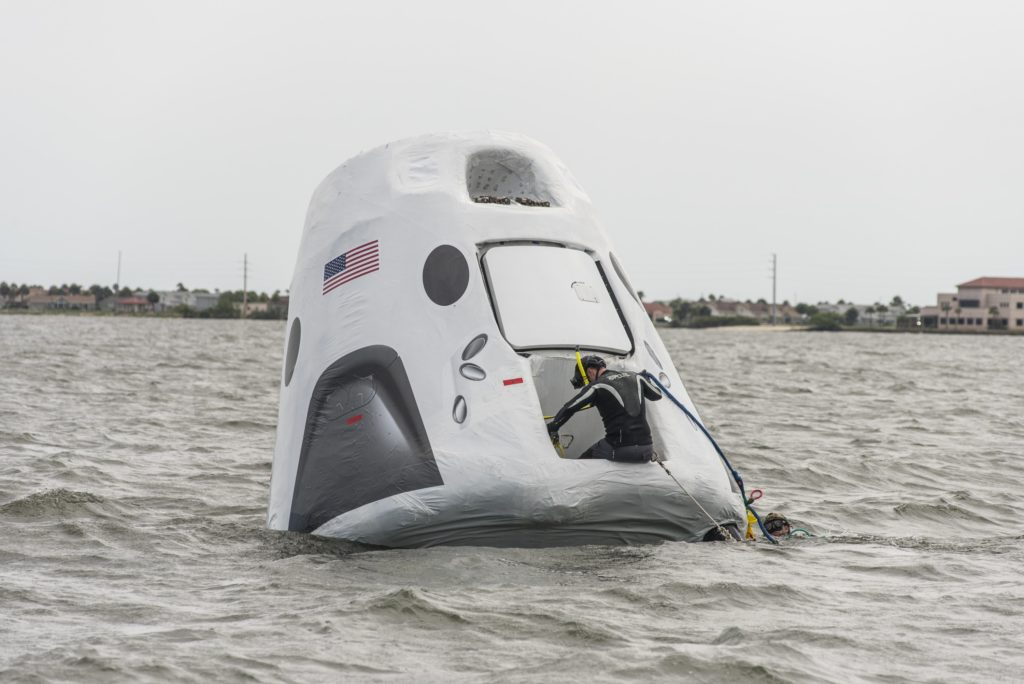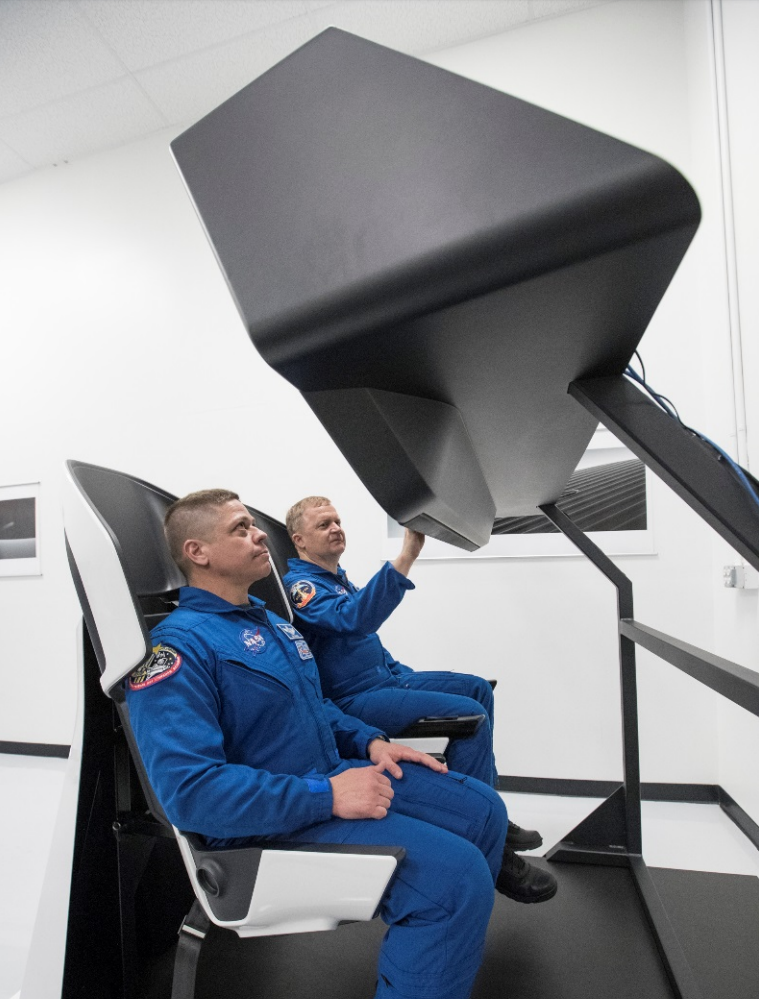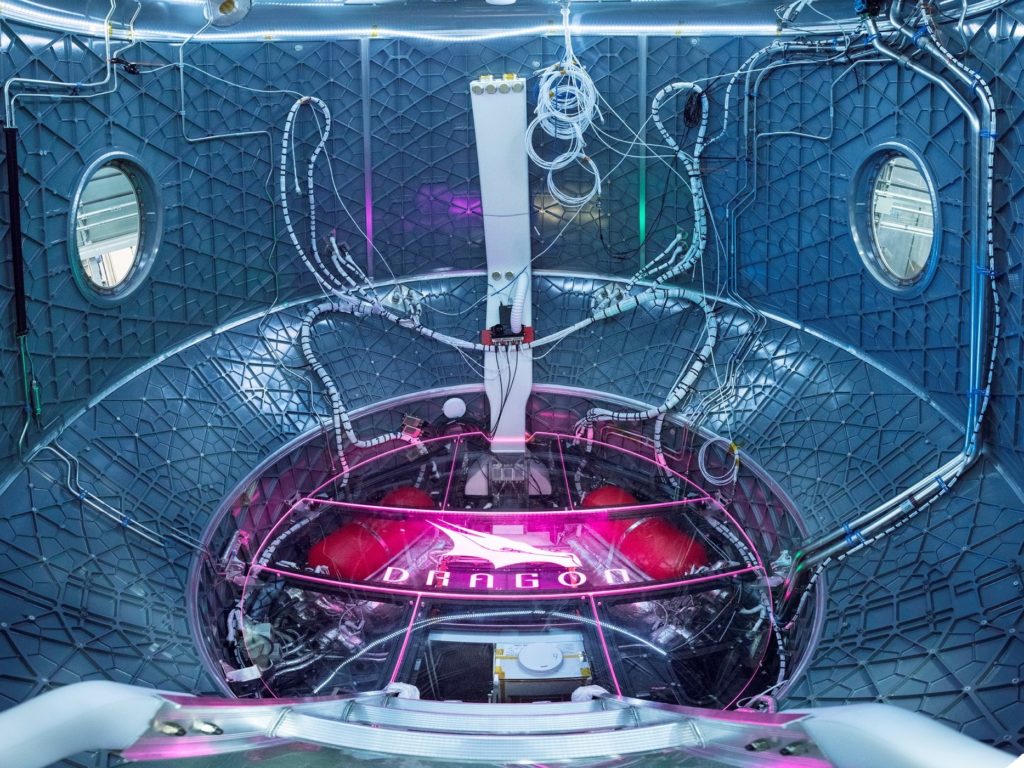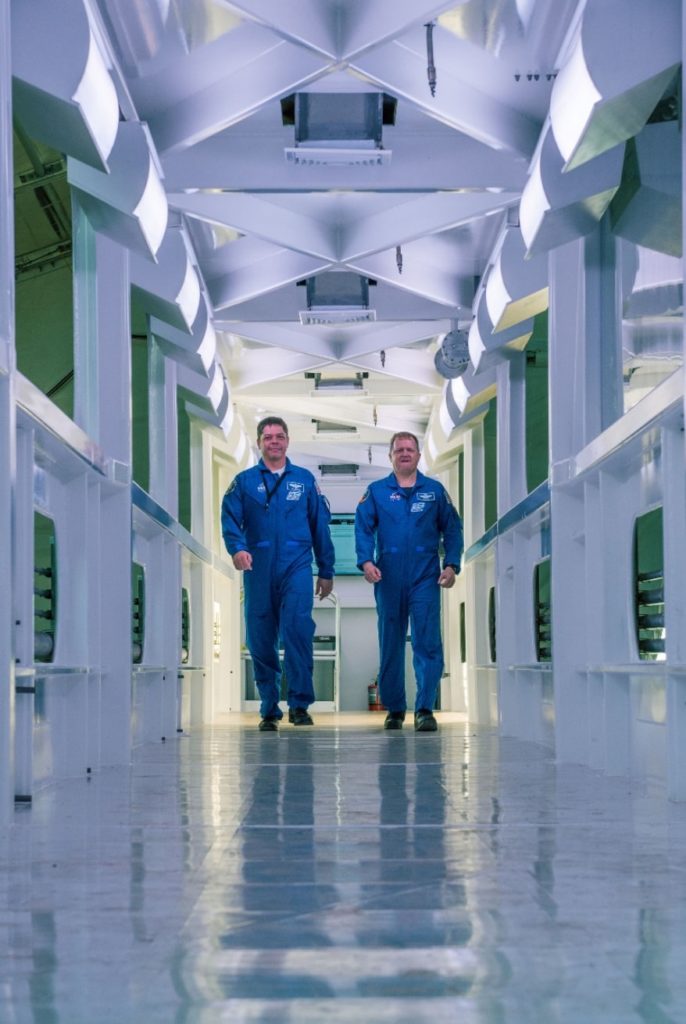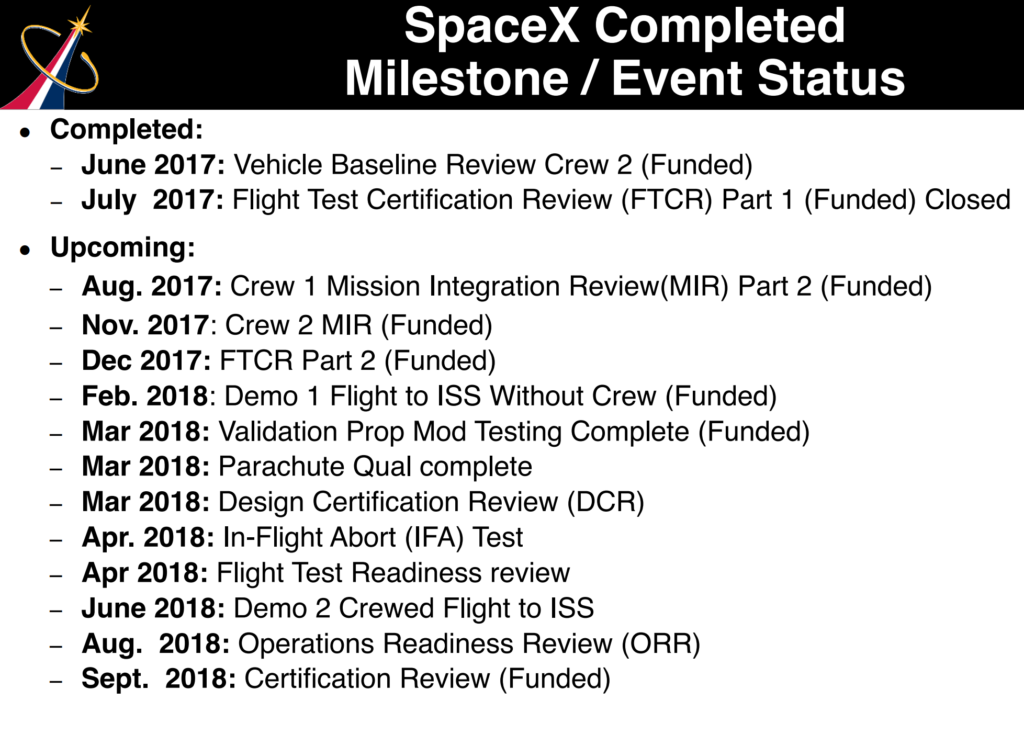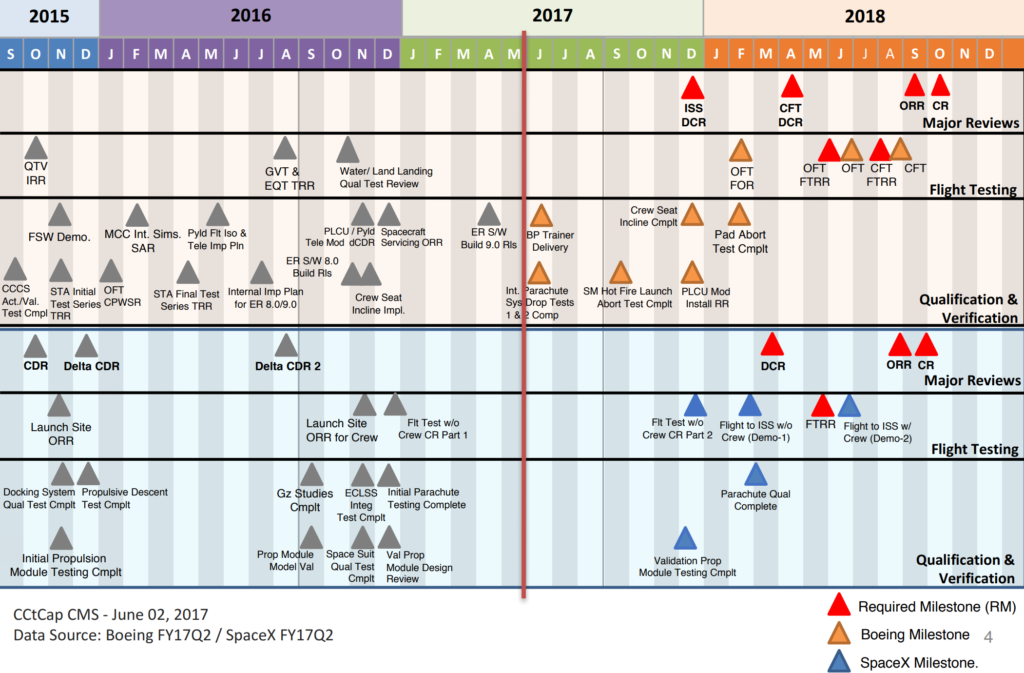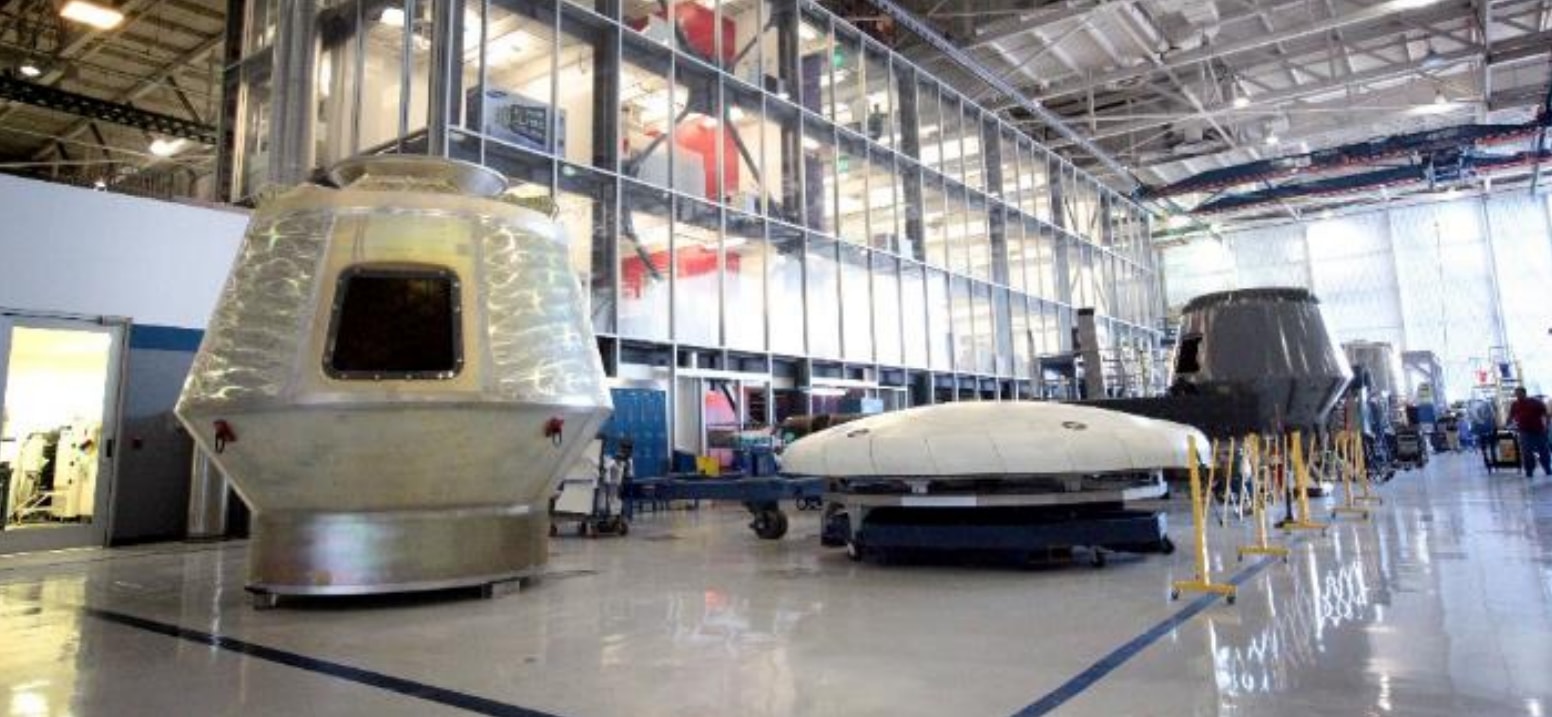

News
SpaceX’s first crewed NASA launches remain on schedule for 2018
Plenty of work lies ahead of both companies, but progress abounds
Amidst a seemingly relaxed July for SpaceX, the company has been working intently with NASA to prepare for its first Commercial Crew mission in as few as seven months. NASA’s combination of strict technical requirements and partial flexibility with the famously fast-moving aerospace company have resulted in a collaborative environment that Elon Musk recently deemed beneficial to the company.
As NASA works with the company to ensure that Dragon 2 is as safe as realistically possible, SpaceX has begun several rounds of advanced testing and training. NASA astronauts are in the process of learning how to operate Dragon 2, and a near-production version of the vehicle’s control software and hardware has been integrated to allow for accurate simulations as practice. Meanwhile, Department of Defense personnel that will be tasked with recovering Dragons and crew from the ocean have begun developing those procedures with a mockup capsule.
- DoD personnel began initial recovery procedure development in July. (SpaceX)
- NASA astronauts utilizing the Dragon 2 simulator as they practice for the first crewed launch in June 2018. (SpaceX)
- A look inside Crew Dragon’s bare crew compartment. (SpaceX)
At SpaceX’s Hawthorne manufacturing facilities, four separate Crew Dragons are in different states of assembly. While one of those vehicles is intended solely for qualification testing, the three remaining Dragons will respectively launch into low Earth orbit throughout the course of 2018, assuming schedules remain firm. Structural testing and verification of the qualification Dragon was completed as of July 24th, and the first flightworthy Dragon has undergone testing of its pressure vessel to ensure that there are no leaks.
Looking forward to launching @NASA astronauts to the International Space Station next year!https://t.co/qoLtTEP4L8
— Elon Musk (@elonmusk) August 3, 2017
Deemed Demo-1 in relation to the first flight of Dragon being Demonstration Flight 1, SpaceX workers are almost ready to integrate the service section and pressure vessel compartments. The pressure vessel is better known as the crew compartment, while the service section is where all the necessary flight and life support systems are contained. Dragon’s “claw” – used to grab hold of the ISS upon docking – and engines have also passed qualification tests.

Different parts of the Demo-1 Dragon in Hawthorne. The crew compartment or pressure vessel can be seen on the left, while the heat shield is front and center. A second and possibly third Crew Dragon pressure vessel can be seen in the background. (SpaceX)
Possibly the most exciting of all, SpaceX has conducted the first pressurized tests of its in-house space suits with NASA crew members. While non-insiders have yet to catch a glimpse of the company’s suits, those lucky enough to have stolen a glance have indicated that they look awesome. As the company progresses to actual vacuum testing of the suits, fans can likely look forward to a reveal. While we don’t yet have a view of SpaceX suits, the July 24th Commercial Crew update did provide the first public photos of SpaceX’s crew access arm, set to be installed at the LC-39A launch pad later this year.
- NASA astronauts check out SpaceX’s recently-completed crew access arm. (SpaceX)
- Whether or not you can parse NASA’s infamous acronym and jargon-heavy language, it’s clear that SpaceX has a considerable amount of work ahead to make their February 2018 deadline. (NASA)
- For those with extreme willpower, a close study of this graphic provides a good idea of where both SpaceX and Boeing are as they head to first CCP launches. (NASA)
Aside from an array of milestones ahead for the company, the only major tasks yet to be finished are design finalization for Crew Dragon’s seat mechanisms and control displays. SpaceX’s Demonstration 1 and 2 launch dates of February and June 2018 respectively remain steady as of this late-July update. Delays are always possible and even likely, but chances are good that SpaceX will be ready to conduct the first launch of crew to the ISS before the end of next year.
News
Tesla begins Robotaxi certification push in Arizona: report
Tesla seems serious about expanding its Robotaxi service to several states in the coming months.

Tesla has initiated discussions with Arizona transportation regulators to certify its driverless Robotaxi service in the state, as per a recent report from Bloomberg News. The move follows Tesla’s launch of its Robotaxi pilot program in Austin, Texas, as well as CEO Elon Musk’s recent comments about the service’s expansion in the Bay Area.
The Arizona Department of Transportation confirmed to Bloomberg that Tesla has reached out to begin the certification process for autonomous ride-sharing operations in the state. While details remain limited, the outreach suggests that Tesla is serious about expanding its driverless Robotaxi service to several territories in the coming months.
The Arizona development comes as Tesla prepares to expand its service area in Austin this weekend, as per CEO Elon Musk in a post on X. Musk also stated that Tesla is targeting the San Francisco Bay Area as its next major market, with a potential launch “in a month or two,” pending regulatory approvals.
Tesla first launched its autonomous ride-hailing program on June 22 in Austin with a small fleet of Model Y vehicles, accompanied by a Tesla employee in the passenger seat to monitor safety. While still classified as a test, Musk has said the program will expand to about 1,000 vehicles in the coming months. Tesla will later upgrade its Robotaxi fleet with the Cyercab, a two-seater that is designed without a steering wheel.
Sightings of Cybercab castings around the Giga Texas complex suggests that Tesla may be ramping the initial trial production of the self-driving two-seater. Tesla, for its part, has noted in the past that volume production of the Cybercab is expected to start sometime next year.
In California, Tesla has already applied for a transportation charter-party carrier permit from the state’s Public Utilities Commission. The company is reportedly taking a phased approach to operating in California, with the Robotaxi service starting with pre-arranged rides for employees in vehicles with safety drivers.
News
Tesla sets November 6 date for 2025 Annual Shareholder Meeting
The automaker announced the date on Thursday in a Form 8-K.

Tesla has scheduled its 2025 annual shareholder meeting for November 6, addressing investor concerns that the company was nearing a legal deadline to hold the event.
The automaker announced the date on Thursday in a Form 8-K submitted to the United States Securities and Exchange Commission (SEC). The company also listed a new proposal submission deadline of July 31 for items to be included in the proxy statement.
Tesla’s announcement followed calls from a group of 27 shareholders, including the leaders of large public pension funds, which urged Tesla’s board to formally set the meeting date, as noted in a report from The Wall Street Journal.
The group noted that under Texas law, where Tesla is now incorporated, companies must hold annual meetings within 13 months of the last one if requested by shareholders. Tesla’s previous annual shareholder meeting was held on June 13, 2024, which placed the July 13 deadline in focus.
Tesla originally stated in its 2024 annual report that it would file its proxy statement by the end of April. However, an amended filing on April 30 indicated that the Board of Directors had not yet finalized a meeting date, at least at the time.
The April filing also confirmed that Tesla’s board had formed a special committee to evaluate certain matters related to CEO Elon Musk’s compensation plan. Musk’s CEO performance award remains at the center of a lengthy legal dispute in Delaware, Tesla’s former state of incorporation.
Due to the aftermath of Musk’s legal dispute about his compensation plan in Delaware, he has not been paid for his work at Tesla for several years. Musk, for his part, has noted that he is more concerned about his voting stake in Tesla than his actual salary.
At last year’s annual meeting, TSLA shareholders voted to reapprove Elon Musk’s compensation plan and ratified Tesla’s decision to relocate its legal domicile from Delaware to Texas.
Elon Musk
Grok coming to Tesla vehicles next week “at the latest:” Elon Musk
Grok’s rollout to Tesla vehicles is expected to begin next week at the latest.

Elon Musk announced on Thursday that Grok, the large language model developed by his startup xAI, will soon be available in Tesla vehicles. Grok’s rollout to Tesla vehicles is expected to begin next week at the latest, further deepening the ties between the two Elon Musk-led companies.
Tesla–xAI synergy
Musk confirmed the news on X shortly after livestreaming the release of Grok 4, xAI’s latest large language model. “Grok is coming to Tesla vehicles very soon. Next week at the latest,” Musk wrote in a post on social media platform X.
During the livestream, Musk and several members of the xAI team highlighted several upgrades to Grok 4’s voice capabilities and performance metrics, positioning the LLM as competitive with top-tier models from OpenAI and Google.
The in-vehicle integration of Grok marks a new chapter in Tesla’s AI development. While Tesla has long relied on in-house systems for autonomous driving and energy optimization, Grok’s integration would introduce conversational AI directly into its vehicles’ user experience. This integration could potentially improve customer interaction inside Tesla vehicles.
xAI and Tesla’s collaborative footprint
Grok’s upcoming rollout to Tesla vehicles adds to a growing business relationship between Tesla and xAI. Earlier this year, Tesla disclosed that it generated $198.3 million in revenue from commercial, consulting, and support agreements with xAI, as noted in a report from Bloomberg News. A large portion of that amount, however, came from the sale of Megapack energy storage systems to the artificial intelligence startup.
In July 2023, Musk polled X users about whether Tesla should invest $5 billion in xAI. While no formal investment has been made so far, 68% of poll participants voted yes, and Musk has since stated that the idea would be discussed with Tesla’s board.
-

 Elon Musk1 week ago
Elon Musk1 week agoTesla investors will be shocked by Jim Cramer’s latest assessment
-

 Elon Musk3 days ago
Elon Musk3 days agoElon Musk confirms Grok 4 launch on July 9 with livestream event
-

 Elon Musk16 hours ago
Elon Musk16 hours agoxAI launches Grok 4 with new $300/month SuperGrok Heavy subscription
-

 News7 days ago
News7 days agoTesla Model 3 ranks as the safest new car in Europe for 2025, per Euro NCAP tests
-

 Elon Musk2 weeks ago
Elon Musk2 weeks agoA Tesla just delivered itself to a customer autonomously, Elon Musk confirms
-

 Elon Musk1 week ago
Elon Musk1 week agoxAI’s Memphis data center receives air permit despite community criticism
-

 Elon Musk2 weeks ago
Elon Musk2 weeks agoTesla’s Omead Afshar, known as Elon Musk’s right-hand man, leaves company: reports
-

 News2 weeks ago
News2 weeks agoXiaomi CEO congratulates Tesla on first FSD delivery: “We have to continue learning!”

